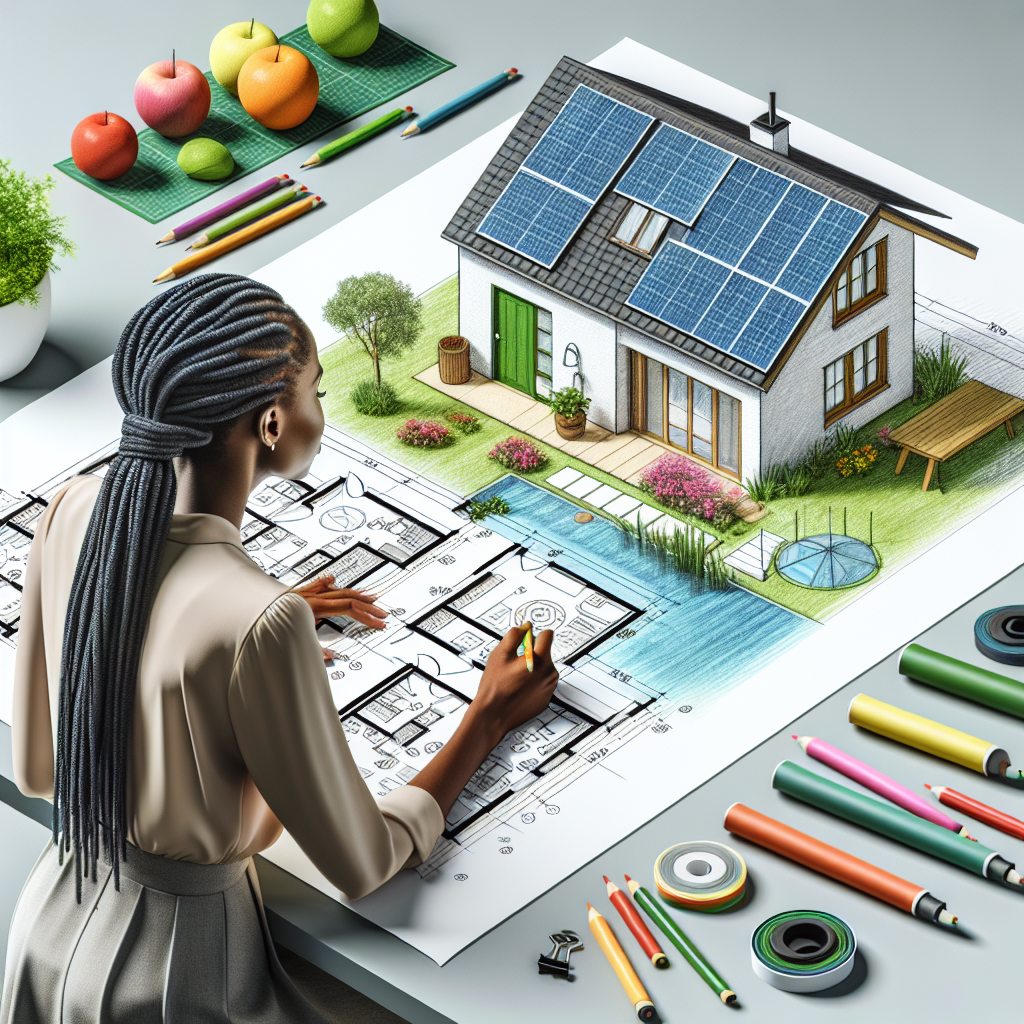In a world where housing costs continue to soar and environmental concerns intensify, building a sustainable home that doesn’t break the bank isn’t just sensible—it’s revolutionary. Many of us dream of creating living spaces that reflect our values while protecting both our planet and our financial future. The most meaningful homes aren’t defined by their price tags, but by thoughtful design that honors both environmental stewardship and financial wisdom. The journey toward sustainable, affordable homeownership begins with understanding that eco-conscious building isn’t reserved for luxury budgets—with strategic planning and creative thinking, environmentally responsible housing can be accessible to those watching their expenses carefully.
*Building a sustainable home isn’t just good for the planet—it’s also a smart investment in your future financial and personal well-being.*
I remember staring at my utility bills five years ago, watching them climb month after month, feeling trapped in a home that was draining my finances and contributing to environmental problems I cared deeply about. Perhaps you’ve felt that same frustration—knowing there must be a better way to live that aligns with both your values and your budget.
The good news? There is. Sustainable housing has evolved far beyond expensive eco-mansions for the wealthy. Today, building a green home on a modest budget isn’t just possible—it’s increasingly practical. With thoughtful planning and strategic choices, you can create a home that reduces your carbon footprint while protecting your financial future.
Understanding Sustainable Home Building Fundamentals
Before jumping into specific techniques, let’s clarify what “sustainable” really means in home construction. A truly sustainable house balances three core elements:
- Environmental impact (reducing resource consumption and pollution)
- Economic viability (reasonable upfront costs and long-term savings)
- Social responsibility (creating healthy, comfortable living spaces)
The most successful budget-friendly sustainable homes don’t try to incorporate every green technology available. Instead, they focus on high-impact, low-cost interventions that offer the greatest return on investment in both environmental and financial terms.
Setting Realistic Sustainability Goals
Begin by defining what sustainability means for your specific situation. Are reduced energy bills your primary concern? Is minimizing environmental impact your passion? Or perhaps creating a healthier indoor environment motivates you?
Your priorities will guide your budget allocation. For instance, someone in a cold climate might prioritize superior insulation and passive solar design, while someone in a water-scarce region might invest more in rainwater harvesting systems.
Remember that perfection isn’t the goal—progress is. Every sustainable feature you incorporate represents a positive step, even if your budget doesn’t allow for every green technology available.
Smart Design: The Foundation of Affordable Sustainability
The most cost-effective sustainability strategy happens before construction begins—at the design stage. Thoughtful design decisions can drastically reduce both building costs and long-term operating expenses.
Size and Efficiency
The simplest way to build sustainably on a budget? Build smaller. A modest-sized home requires:
- Fewer construction materials
- Less energy for heating and cooling
- Reduced maintenance costs
- Lower property taxes (in many jurisdictions)
Consider this: reducing your planned home size by just 20% could potentially save 20% on construction costs while permanently reducing your environmental footprint and ongoing expenses.
Beyond raw square footage, efficient space planning ensures every square foot serves multiple purposes. Open floor plans with multifunctional spaces eliminate wasted areas. Think reading nooks that double as guest sleeping quarters, or home office spaces integrated into common areas rather than dedicated rooms used only occasionally.
Orientation and Passive Design
Properly orienting your home costs nothing during construction but pays dividends for decades. In most climates, a home with its long axis running east-west with more windows facing south (in the Northern Hemisphere) maximizes free solar heat gain in winter while minimizing it in summer.
Passive design elements work with nature instead of against it:
- Roof overhangs that block summer sun but admit winter sunlight
- Thermal mass (like concrete floors or masonry walls) that store heat energy
- Strategic window placement for cross-ventilation
- Trees that provide summer shade but allow winter sun when leaves fall
These passive strategies can reduce heating and cooling needs by up to 40% with minimal additional construction costs.
Material Selection: Balancing Cost, Durability, and Environmental Impact
Building materials account for a significant portion of construction budgets, making them a prime target for both cost savings and sustainability improvements.
Local and Reclaimed Materials
Materials sourced locally reduce transportation emissions and often cost less. Visit salvage yards, deconstruction sites, and habitat restore locations to find quality materials at fraction of retail prices. Common budget-friendly reclaimed options include:
- Reclaimed wood flooring (often higher quality than new products)
- Recycled-content countertops
- Previously used doors, windows, and fixtures
- Salvaged brick and stone
One community builder in Portland reduced costs by $32,000 using primarily reclaimed materials, while diverting 12 tons of waste from landfills.
Durable, Low-Maintenance Choices
True sustainability considers lifecycle costs, not just upfront expenses. Materials that last longer and require less maintenance deliver superior long-term value, even if they cost somewhat more initially.
For example, fiber-cement siding might cost 25% more than vinyl initially but can last twice as long without painting. Metal roofing costs more than asphalt shingles but typically lasts 2-3 times longer and improves energy efficiency.
Energy Efficiency: The Highest ROI Sustainability Investment
No aspect of sustainable building offers better financial returns than energy efficiency. Every dollar invested here typically returns multiple dollars over the life of your home.
High-Performance Building Envelope
Think of your home’s exterior shell—its walls, roof, windows, and foundation—as your first and most important energy system. A well-designed building envelope can reduce heating and cooling needs by up to 90% compared to minimum code requirements.
Budget-friendly investments include:
- Enhanced insulation (particularly in attics where installation is easy)
- Air sealing (addressing gaps around windows, doors, and penetrations)
- Advanced framing techniques that use less lumber while improving insulation
- Window selection based on climate needs (high solar gain in cold climates, low solar gain in hot regions)
One homeowner in Minnesota spent an additional $7,500 on insulation and air sealing, reducing their heating bills by over $1,200 annually—a six-year payback followed by decades of savings.
Renewable Energy Considerations
While solar panels often capture attention in sustainable building discussions, they should generally be one of the last investments, not the first. After maximizing your home’s efficiency, you’ll need a much smaller (and less expensive) renewable energy system.
Consider a phased approach:
- Build with solar-ready electrical systems and roof designs
- Install basic roof mounts and conduit during construction
- Add actual panels later when budget allows
This approach saves significant retrofitting costs while allowing you to postpone the largest expense until after recovering from construction costs.
Water Conservation and Management
Water-efficient homes save money on water bills while reducing strain on community infrastructure and natural water sources.
Low-Cost Water Saving Strategies
Simple water conservation measures provide excellent returns:
- Low-flow fixtures (toilets, faucets, showerheads)
- Water-efficient appliances
- Drought-resistant landscaping using native plants
- Simple rainwater collection systems for garden irrigation
These basic interventions can reduce household water usage by 30-50% with minimal investment.
For more ambitious projects, greywater systems that safely reuse water from sinks, showers, and washing machines for toilet flushing or irrigation represent the next tier of investment, though regulations vary significantly by location.
Financing Your Sustainable Home
Several financial resources can help bridge the gap between conventional and sustainable construction costs:
- Energy-efficient mortgages that factor in future utility savings
- Local and federal tax incentives for renewable energy and efficiency
- Utility company rebates for efficient appliances and construction
- Green building certification incentives offered by some municipalities
Research these options early in your planning process, as some require application before construction begins.
Conclusion: The Phased Approach to Affordable Sustainability
Perhaps the most important strategy for building sustainably on a budget is embracing a long-term perspective. Not every green feature needs to be implemented immediately. Consider your sustainable home a lasting project that evolves over time.
Start with the elements that:
- Cannot be easily added later (orientation, insulation, structural elements)
- Offer the best return on investment
- Address the sustainability factors most important to you
By prioritizing thoughtful design, energy efficiency, and material selection while creating infrastructure for future improvements, you can build a home that benefits both your finances and the planet—proving that sustainability and affordability can indeed go hand in hand.
Remember that every sustainable choice, no matter how small, moves us collectively toward a healthier, more responsible relationship with our built environment and the natural world that sustains us.In Summary: Elevate Your Space with Purpose
From reimagining ceilings to revitalizing walls and transforming facades, we’ve explored how intentional design choices can breathe life into any environment. Key takeaways include:
Now it’s your turn! Whether you’re sketching ideas for a room refresh or planning a full facade overhaul, remember: great design starts with vision and thrives on action. Share your favorite inspiration or a project you’re proud of in the comments—we’d love to cheer you on! Ready to break through creative ceilings and build something extraordinary? Start today, and let your space reflect the bold, beautiful story only you can tell. 🌟




